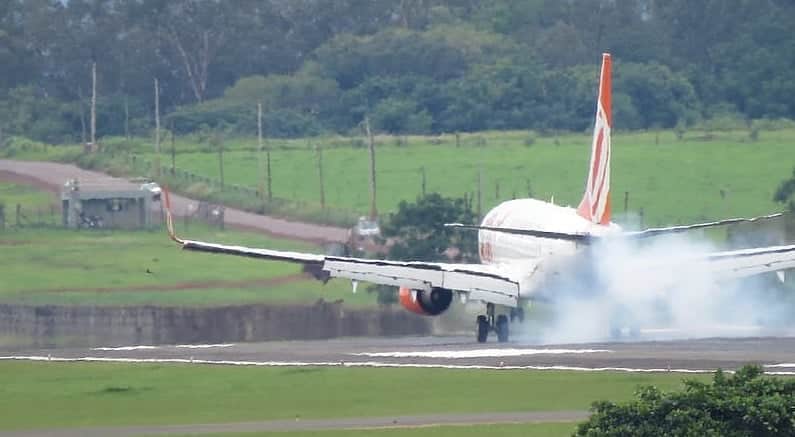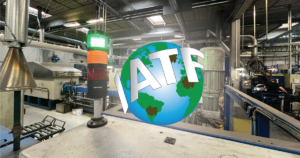NEW YORK — Reportlinker.com recently announced the release of Aircraft Braking System Market – Global Industry Size, Share, Trends, Opportunity, and Forecast, 2018-2028.
The global aviation braking system market is anticipated to grow at an impressive rate during the forecast period on account of increasing air traffic and a surge in operations in the commercial-aviation industry.
The aircraft braking system consists of a wide variety of aviation braking systems, including single-disc, dual-disc, multiple-disc, and rotary disc brakes.
Aircraft landing gear disc brakes are used to stop the wheels as they come into contact with the surface. Thrust reversers allow the aircraft to be slowed down by using engine thrust, specialized flight control surfaces known as air brakes that function by generating more drag resulting in a slowdown of the aircraft.
All recent aircraft are equipped with braking systems that help them slow down and stop when they are on the ground. In addition, they are often employed to steer an aircraft through differential braking.
The industry is being driven by improvements in the designs and technology of aircraft braking systems, such as the integration of electronics with fly-by-wire braking.
The demand for aviation braking systems is rising across the globe due to an increment in aircraft deliveries and a substantial fleet of commercial and regional aircraft.
Due to the COVID-19 outbreak across the world, the entire value chain of the aviation industry was shaken.
Despite being a very small percentage of the aircraft industry, the aircraft brake system replacement market was severely impacted. Many companies delayed their product deliveries, and travel restrictions by many countries in Europe, North America, and Asia Pacific resulted in delays in collaboration and partnerships.
However, the airline sector showed signs of recovery, with domestic air traffic returning at the fastest rate and international air travel following its path as economies throughout the world gradually began to recover from the lockdown during the epidemic.
Increasing Commercial Activities
The commercial-aircraft industry is divided into two segments passenger aircraft and cargo aircraft. The commercial segment of the market presently holds the highest share, and it is anticipated that throughout the projected period, it will grow at a faster pace.
To accommodate the rising passenger traffic around the world, there has been a rise in aircraft orders and deliveries. This change is promoting the use of new braking technology, which has less weight, better performance, and is also simple to maintain.
Additionally, this raises the demand for aircraft braking systems. Modern commercial aircraft operating systems like the B737 Max, A320 Neo, and B777x are gradually replacing conventional steel-based braking systems with advanced carbon fiber ones over the course of the forecasted time due to several advantages such as better life, robust performance, weight reduction, and lower fuel consumption.
This trend in commercial aviation technology will be a major factor in supporting the global aircraft braking system market growth.
Emerging New Technologies
Traditional braking system requires a complicated system that runs from an aircraft engine-driven pump (EDP) to brake actuators, adding weight to the aircraft and perhaps resulting in significant vibration and leakage issues.
Many industries have designed and adopted self-powered brake systems to increase the dependability and safety of modern electrified aircraft.
With new cutting-edge technology, the braking system can handle harsh settings and reduce material degradation due to corrosion. In addition, many organizations are investing in R&D to make lighter and more efficient braking systems.
Overall, this results in the growing demand for braking in upcoming years.
Strict regulations and quality of products
The aerospace industry strictly maintains its regulation and quality standards pertaining to passengers and aircraft safety. According to regulations, each braking system must be approved under aviation industry regulations.
Therefore, aviation braking companies need to design new products as per the requirements and utmost safety. Such regulations limit the growth of the aircraft braking system market.
Market Segmentation
The global market is segmented by aircraft type, actuation, end-user, distribution, and by region. The market is segmented into fixed-wing and rotary-wing.
Based on actuation, it is divided into power brake, boosted brake, and independent brake, and based on end user, the market is segmented into commercial, military, and general aviation. Based on distribution, it is divided into OEM and Replacement.
The market analysis also studies the regional segmentation to devise a regional market divided amongst Asia-Pacific, Europe, North America, South America, the Middle East and Africa.
Company Profiles
Safran S.A., Aviation Products Systems Inc., Beringer Aero, Collins Aerospace, Crane Aerospace & Electronics, Grove Aircraft Landing Gear Systems Inc., Honeywell International, Matco Mfg., Mcfarlane Aviation Inc., Rapco Inc. are the key players developing advanced technologies to stay competitive in the market and enhancing their product portfolio in the regions to increase their customer outreach.








